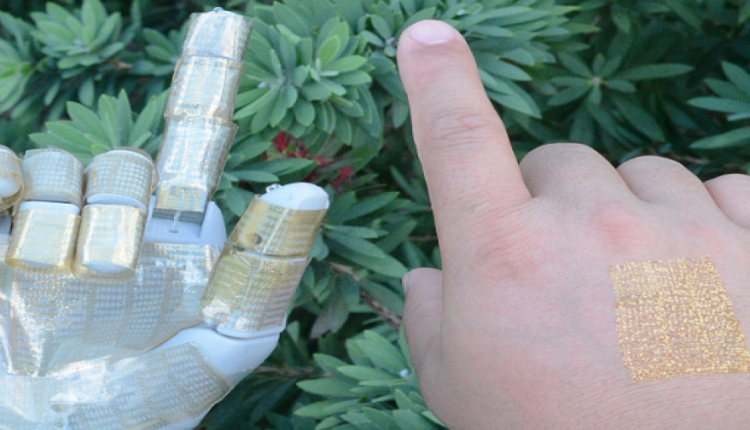While the most valuable aspect of human-machine interfaces (HMIs) from an industrial perspective is the ability to closely monitor production and respond to changing demands, there are also many benefits for non-industrial applications.
The potential human health benefits from improved diagnostics and monitoring are earlier and more accurate diagnosis and more precise treatment. Unfortunately, until recently, wearable HMIs that can collect and store important health information about the wearer, among other uses—have benefited from advances in electronics, materials and mechanical designs. But current models still can be bulky and uncomfortable, and they can’t always handle multiple functions at one time.
Researchers at the University of Houston recently reported the discovery of a multifunctional ultra-thin wearable electronic device that is imperceptible to the wearer.
The device allows the wearer to move naturally and is less noticeable than wearing a Band-Aid, said Cunjiang Yu, Bill D. Cook associate professor of Mechanical Engineering at the University of Houston and lead author for the paper.
It has the potential to work as a prosthetic skin for a robotic hand or other robotic devices, with a robust human-machine interface that allows it to automatically collect information and relay it back to the wearer.
That has applications for health care as well as situations like chemical spills, which are risky for humans but require human decision-making based on physical inspection. The robotic hand could instantly deduce physical condition on contact.
While current devices are gaining in popularity, the researchers said they can be bulky to wear, offer slow response times and suffer a drop in performance over time. More flexible versions are unable to provide multiple functions at once—sensing, switching, stimulation and data storage, for example—and are generally expensive and complicated to manufacture.
The device described in the paper, a metal oxide semiconductor on a polymer base, offers manufacturing advantages and can be processed at temperatures lower than 300 C.
The UH advance is an ultrathin, mechanically imperceptible, and stretchable human-machine interface (HMI) device, which is worn on human skin to capture multiple physical data and also on a robot to offer intelligent feedback, forming a closed-loop HMI. The multifunctional, soft, stretchy HMI device is based on a one-step formed, sol-gel-on-polymer-processed indium zinc oxide semiconductor nanomembrane electronics.
Source: University of Houston

